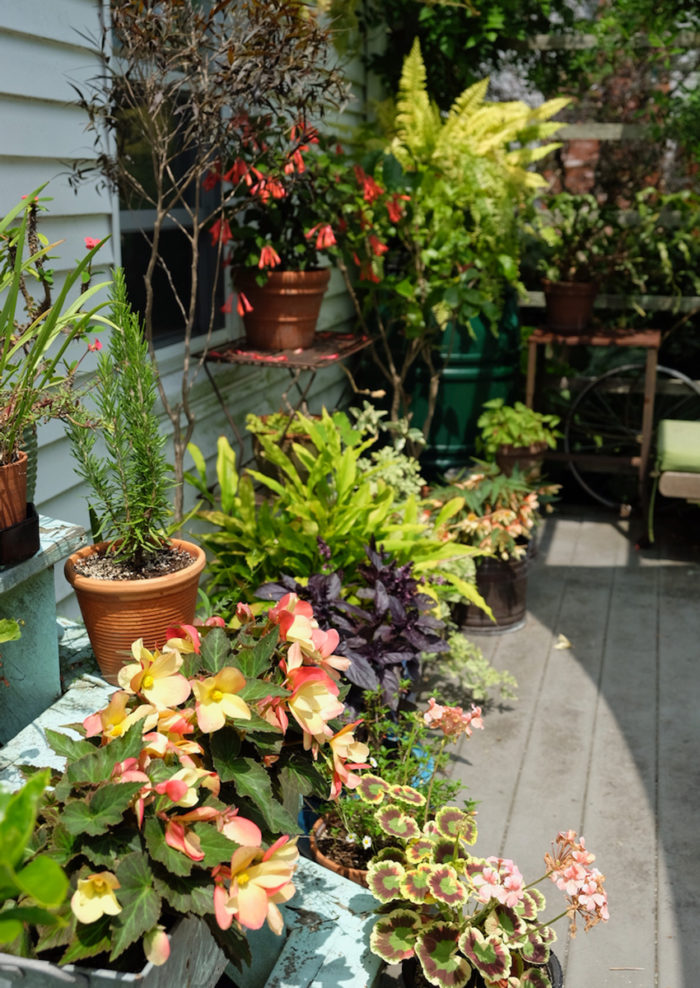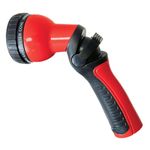
By August, summer is a sticky, dust-encrusted, worn-out old shoe. Most of us choose to abandon the garden to find a breeze elsewhere. And many of us will return to lament a garden past its peak and full of crabgrass. Heat, drought, and ambivalence do interfere with plant vigor, which can cause gaps in the bloom parade, but your garden still has potential as a pollinator feeding station well into fall. Take time in August to recharge the garden’s batteries—and yours.

Have a vacation plan in place. If you go away, consider hiring a professional plant sitter. Or promise a friend a souvenir in exchange for watering your containers, harvesting tomatoes and blackberries, and keeping the birdbath topped up. Even if you can’t leave, cluster your containers in the shade within easy reach of the hose to make watering less of a chore. Check the forecast; if there’s no rain in sight, give the garden’s newest acquisitions a deep soak before you leave.

Fertilize containers, annuals, tender perennials, and roses one more time. Synthetic blossom booster is fine for containers. In the garden, douse annuals and tender perennials with a dilute solution of organic fish or seaweed emulsion. Scratch a generous handful of an organic granular slow-release fertilizer into the soil around your roses. They and your annuals and tender perennials will reward you with a fall flush of blooms that will delight pollinators. Learn more about which fertilizer is best for different situations here.

Shear the garden. Pick bouquets, trim overgrowth, and deadhead to encourage another round of growth and flowering. The bouquets pictured above are made of zinnias (Zinnia elegans cvs., annual), cosmos (Cosmos bipinnatus cvs., annual), tassel flowers (Emilia javanica, annual), dahlias (Dahlia cvs., Zones 7–11), mountain mint (Pycnanthemum muticum, Zones 4–8), and ‘Henry Eilers’ sweet coneflower (Rudbeckia subtomentosa ‘Henry Eilers’, Zones 4–8).

Propagate cuttings. Make an investment in next year’s garden; new growth on tender perennials such as salvias (Salvia spp. and cvs., Zones 5–11), heliotrope (Heliotropium arborescens and cvs., Zones 10–11), cuphea (Cuphea spp. and cvs., Zones 8–12), and scented and zonal geraniums (Pelargonium spp. and cvs., Zones 10–11) will be ripe for propagation by tip cutting. Look for tips that are sturdy but not woody and haven’t yet formed a flower bud. Scented and zonal geranium tips are more likely to root if allowed to form a callus before being stuck in dampened perlite. Mist the foliage to prevent wilt, and let the cut ends poke out of an open plastic bag overnight. Once rooted, your potted-up cuttings will need to overwinter indoors; a cool, sunny windowsill will do. Learn more about propagating tip cuttings here.

Don’t let weeds go to seed. If the soil is dry, cut them off at ground level. The theory is that their roots will die from lack of nourishment. As a bonus, the less you disturb the soil, the fewer weed seeds will surface to germinate in the light of day. Keep in mind that with more plants in your garden, you will have less soil exposed to the elements, less real estate available to opportunistic weeds, and fewer weeds you will be able to see.

Get your spring bulb orders in. Kick back in the hammock with a stack of books and bulb catalogs, and think spring. Refer to your April wish lists, and allow for some impulse shopping. Base your final selections on a continuous spring show, then get your orders in before the best and newest choices sell out. Check out one of these resources for new and interesting varieties:
- Best Spring-Flowering Bulbs
- Extraordinary Spring Bulbs to Plant in the Fall
- Inspiration for Spring Bulb Design
Or simply take a step back. Time off will refresh your enthusiasm, and your garden will benefit. And it will still be there, better than ever, in September.
—Kristin Green is author of Plantiful: Start Small, Grow Big With 150 Plants That Spread, Self-Sow, and Overwinter. She gardens in Bristol, Rhode Island.
Fine Gardening Recommended Products

Dramm Revolution Adjustable 9-Pattern Metal Hose Nozzle

RAINPOINT Sprinkler Timer with Brass Swivel

Morvat Heavy Duty Brass Y-Valve


















Comments
Log in or create an account to post a comment.
Sign up Log in